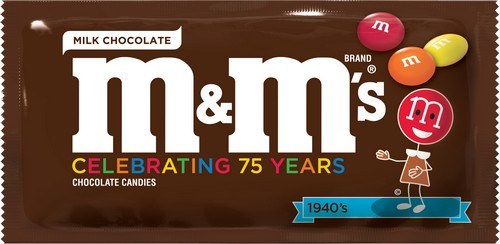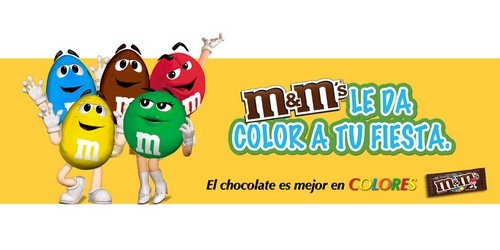The Marketing mix of M&M’s analyses the 4Ps of M&M’s, which includes the Product, Price, Place, and Promotion of M&M’s. M&M’s is a subsidiary brand of its owner company, Mars Incorporated. It is a candy shell made of chocolate as its main ingredient and is associated with the food industry. M&M’s is of American origins and was launched in 1941. Its initials are the names of its creators, Bruce Murrie and Forest Mars. Brand faces competition from other chocolate makers, and some of them are as follows –
- Hershey’s
- Cadbury’s gems
- Smarties by Nestle
About M&M’s
- Type: Chocolate
- Industry: Confectionery
- Founded: 1941, United States
- Founders: Forrest Mars Sr. and Bruce Murrie
- Headquarters: McLean, Virginia, United States
- Area served: Worldwide
- Current CEO: Grant F. Reid
- Number of employees: Over 130,000
- Major products: M&M’s Chocolate Candies
Table of Contents
M&M’s Product Strategy
M&M’s are chocolate-filled candy shells with button shapes to make them look more attractive. Each product is printed with the letter m in its lower case and is filled with one or more chocolate pellets and variants. They are available in different colors like brown, orange, green, yellow, red, and blue.
Original candy was filled with peanuts, fruit, milk, and chocolate and was called plain variety. Its first variation had peanuts along with milk chocolate in a candy shell. Both these are the all-time favorite and are still in-demand products. With time, several other varieties have been introduced to the consumer market. M&M’s variants include the following fillings and sizes-
- Chocolate varieties like white chocolate, dark chocolate, and milk chocolate
- Sizes include mega, mini, and regular.
- Nuts include strawberry-peanut butter, dark chocolate peanut butter, almonds, and peanuts.
- Fruits include candy apple, coconut, pineapple, cherry cordial, raspberry, cherry, and orange.
- Spice and herbs include chili nut and honey nut, coffee nut, mocha, pumpkin spice latte, pumpkin spice, mint crisp, gingerbread, holiday mint, cinnamon, and mint chocolate.
- Dessert includes pecan pie, vanilla shake, red velvet, white chocolate candy corn, and pretzel
The product mix of M&M’s in 2023 is as follows (Source)
- Milk Chocolate M&M’s: The classic version featuring a milk chocolate center with a candy shell.
- Peanut M&M’s: These include a peanut center, milk chocolate, and candy shell.
- Peanut Butter M&M’s: These have a creamy peanut butter center instead of a whole peanut.
- Pretzel M&M’s: A crunchy, salty pretzel center is surrounded by milk chocolate and the classic candy shell.
- Crispy M&M’s: These contain a crispy rice center, offering a lighter crunch.
- Almond M&M’s: Similar to the peanut variety but with almonds.
- Dark Chocolate M&M’s: Catering to those who prefer the richer taste of dark chocolate.
- Caramel M&M’s: Featuring a soft caramel center.
- Mini M&M’s: Smaller versions of the classic milk chocolate M&M’s, often used for baking.
- Mega M&M’s: Larger than the regular M&M’s with more chocolate.
- Seasonal Varieties: M&M’s often releases seasonal flavors and colors, such as mint for Christmas or pumpkin spice for fall.
- Limited Edition Flavors: Occasionally, special flavors are introduced for a limited time, like strawberry, coconut, or coffee nut.
M&M’s Place Strategy
OperatioM&M’s M&M’s candies started from a facM&M’sat Clinton Hill in New Jersey, but excessive demands led to a bigger and better factory outlet at Newark in New Jersey. Later, this factory was relocated to Hackettstown. M&M’s started selling its products on the international market in the 1980s in places like Australia, the United Kingdom, Malaysia, Japan, Hong Kong, France,e and Canada.
Currently, its products can be easily obtained in nearly one hundred countries. The company has a strong distribution channel to market its products globally and has entered into tie-ups with several leading retail stores in different countries. It also has its retail outlet, M&M’s World, which sells M&M’s merchandise and candy. The M&M’s outlet was opened in the Las Vegas Strip and later in Orlando in 2005, followed by New York City in 2006, the London outlet in 2011, and the Shanghai location in 2014.
The place strategy of M&M is as follows:
- Global Distribution: M&M’s are available worldwide and sold in supermarkets, convenience stores, and specialty candy shops, ensuring global accessibility and recognition.
- Online Sales Platforms: They utilize online sales through their own websites and third-party e-commerce platforms, catering to the growing trend of online shopping.
- Strategic Retail Placement: M&M’s are strategically placed at checkout counters and high-traffic store areas to encourage impulse purchases.
- Theme Parks and M&M’s Stores: They have flagship M&M’s stores in major cities and a presence in theme parks, enhancing brand experience and visibility.
- Vending Machines and Snack Services: M&M’s are commonly found in vending machines and snack services in offices, schools, and transportation hubs, making them easily accessible for on-the-go consumption.
M&M’s Pricing Strategy
M&M’s cM&M’s to a mass market M&M’s targeted individuals from all age groups who love sweets as its first target market of customers. It is a particular favorite of children because it is colorful and has chocolate as its core ingredient.
The company has adopted a reasonable and competitive pricing strategy and policy for its products, making it an affordable chocolate brand that anyone can buy anytime without looking at its price tag. Thus, M&M’s has made its products accessible to every consumer. The brand has also adopted a promotional pricing strategy and offers special incentives to its customers.
M&M’s pricing strategy is a delicate balance between maintaining brand value and ensuring global market competitiveness. Here’s a breakdown of their approach:
- Competitive Pricing: M&M’s are priced competitively within the confectionery market. They maintain a balance that ensures affordability for the average consumer while not undervaluing the brand.
- Psychological Pricing: Often, M&M employs psychological pricing strategies, like pricing products just below a whole number (e.g., $0.99 instead of $1.00). This strategy aims to make the price seem lower than it is, encouraging more purchases.
- Premium Pricing for Special Editions: For limited edition flavors or specialty products, M&M uses premium pricing. These products are priced slightly higher, capitalizing on their uniqueness and limited availability.
- Promotional Pricing: M&M’s often uses promotional pricing strategies, such as discounts, bulk buying offers, or holiday specials, to boost sales and attract customers.
- Segmented Pricing: The brand also employs segmented pricing based on packaging size and type. Larger or special packaging (like gift packs) are priced higher, catering to different consumer needs and occasions.
M&M’s Promotion Strategy
M&M’sM&M’sa descriptive tagline M&M’s in your mouth, not in your hand. It is a true reflection of M&M’s products. It has been able to earn the trust of consumers. It has gained high brand recognition because of its intensive marketing activities, including personal selling, sales promotion, advertising, and public relations. M&M has launched excellent ad campaigns with a distinct character for every colored candy, and these marketing campaigns are shown via children’s magazines, newspapers, and television channels.
To increase its brand visibility, it offers personalized M&M gifts for special occasions, such as birthdays and anniversaries. It has entered into several partnership deals and sponsors NASCAR, and some of its famous drivers include Kyle Busch, Elliot Sadler, and Ken Schrader. M&M recognizes the appeal of fM&M’s personalities and has roped in several celebrities for its brand endorsements, like J.K. Simmons, Billy West, Cree Summer, and Vanessa Williams.
The promotion of the marketing strategy of M&M is as follows:
- Creative Advertising Campaigns: M&M employs memorable and often humorous advertising campaigns featuring their iconic anthropomorphic candy characters, engaging a broad audience across various media platforms.
- Social Media and Digital Marketing: They leverage social media and digital marketing extensively, using platforms like Instagram, Facebook, and Twitter for interactive campaigns, influencer partnerships, and targeted ads.
- Seasonal and Event-Based Promotions: M&M’s capitalizes on holidays and events with themed packaging, limited-edition flavors, and special promotions, enhancing brand visibility and consumer engagement during key sales periods.
Some Recent Video ads and Print ads of M&M’s are:
Liked this post? Check out the complete series on Marketing Mix


Hi! Excellent info, Am a student going for my degree in Marketing and this was a fun and informative . I look forward to reading more from your publication. Thanks Tracy